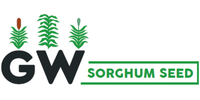|
This article originally appeared on southwestfarmpress.com, and was authored by Jason P. Ott (Texas AgriLife Extension)
A 2013 outbreak of an invasive aphid caused from 25 percent to 50 percent yield loss and total yield loss in some unprotected grain sorghum fields in Texas, including Nueces County. Neighboring starts also identified the pest. According to work by Michael Brewer and Mo Way, with Texas A&M AgriLife Research, infestations were initially observed after sorghum heads were developing, but likely began infesting the crop earlier. The aphid may be a new variant of sugarcane aphid, Melanaphis sacchari, which has a high preference for sorghum, or a very closely related species (M. sorghi). Infestations detected were heavy, often with hundreds of sugarcane aphid per leaf. Leaves became sticky and shiny from honeydew and coated with sooty mold fungus (grows on honeydew), which hampered harvesting operations. Heavy sugarcane aphid populations and honeydew/sooty mold fields were observed in the lower Rio Grande Valley, the Gulf Coast, central Texas Blacklands, and northern counties bordering the Red River, as well as in southern Oklahoma along the Red River and from southwest to northeast Louisiana. Fall populations on remnant sorghum of harvested fields and johnsongrass have been detected in many of these counties, including Nueces County, positioning the aphid for possible outbreaks in 2014. Early insecticide trials conducted by Way, Brewer, and others have identified early management options. Natural enemies also feed on sugarcane aphid. Researchers compared four insecticidal treatments to an untreated control on sugarcane aphids in a field in China, Texas. The field had been previously treated with Lorsban 4E two to three times, but sugarcane aphid populations were still high at the time of application of test treatments. Insecticidal treatments included Lorsban Advance, Transform WG, Karate Z, and Dimethoate 4EC. All treatments provided a significant level of control compared to the untreated check except for Karate Z four days after treatment. Entomologists encourage producers to scout sorghum fields early in the growing season and at least through early head development in 2014 to facilitate a timely insecticide application, if needed. While this aphid is of particular concern in 2014, growers should also be prepared for more common sorghum pests. Therefore, in addition to scouting, entomologists encourage sorghum producers to use systemic insecticide seed treatments or in-furrow insecticide applications, plant early to prevent midge problems, and use suggested insecticides for rice stinkbug.
0 Comments
|
|

 RSS Feed
RSS Feed